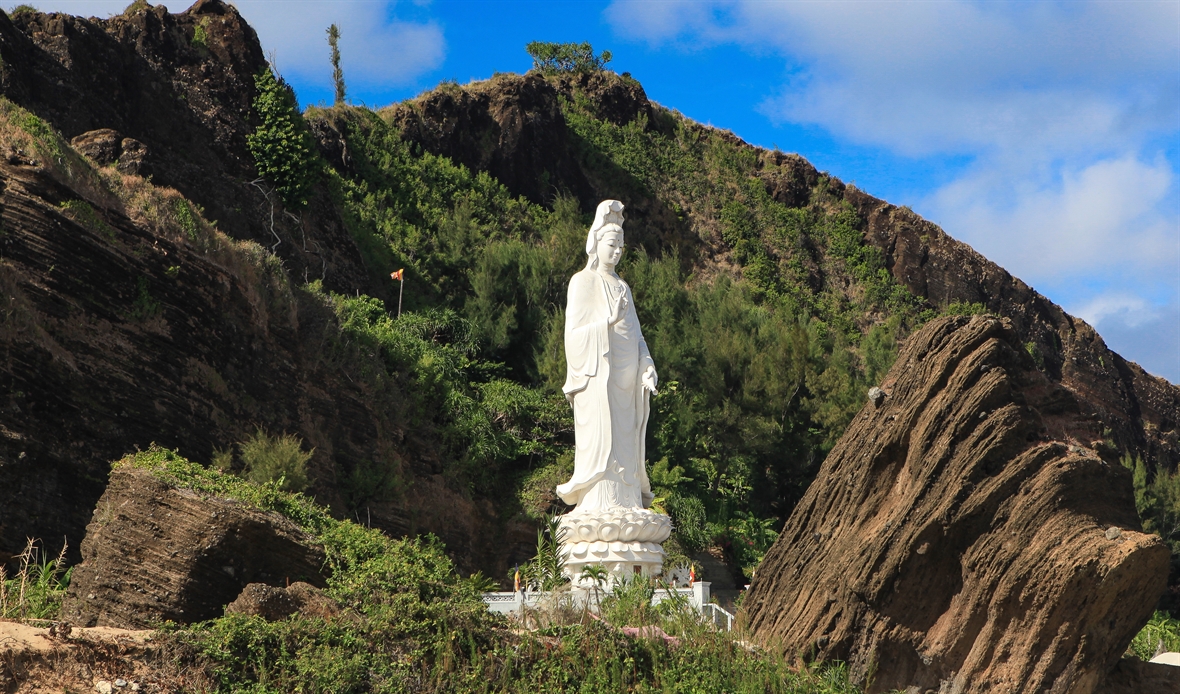Duc pagoda sits halfway up the slopes of Gieng Tien mountain, the volcano that has been dormant for thousands of years. After climbing up 139 stone steps, visitors will see Duc pagoda. The feeling one gets is that the pagoda is small yet very special.
According to historical records, from the year 60 of the last century, this place was a tiger cave. Monk Giac Tuan then chose it as the place to practice his beliefs. It was, however, not until the early 2000s that the pagoda was cleaned up and decorated.
 The 27m high statue of Quan The Am is located at the foot of Gieng Tien mountain,
The 27m high statue of Quan The Am is located at the foot of Gieng Tien mountain,
which is the main road to Duc pagoda. Photo: Cong Dat / VNP
 Around the statue of Quan The Am, there are many lava stone blocks with strange shapes. Photo: Cong Dat / VNP
Around the statue of Quan The Am, there are many lava stone blocks with strange shapes. Photo: Cong Dat / VNP
|
Located right in the lobby of the scenic area of Duc pagoda is a 27m high statue of Quan The Am, the Avalokitesvara Bodhisattva, while the ancient and mossy shrines lie deep in the mountain.
According to the legend believed by the Buddhists, Avalokitesvara Bodhisattva once chose to live here, keeping islanders away from natural disasters. The statue of Avalokitesvara Bodhisattva and the road to the pagoda were built in 2010 and inaugurated in 2012. It is all thanks to the contribution of Buddhist monks and nuns and the Ly Son people.
At Duc pagoda, the statue of Avalokitesvara Bodhisattva overlooks the picturesque scenery of the sea. Yet the most special thing about this place is the feeling when you climb to the top of the pagoda to see the crater which is now a landscape of green grassland in the shape of a basin. It is an ideal place to admire the panoramic view of Ly Son island from above. Enjoying views from this position, you’ll come to understand why this place is compared to a fairyland.
Duc pagoda currently has three different large and small rock caves. Lying in the middle, the largest and highest one is the main hall to worship Tathagata Buddha, Ksitigarbha Bodhisattva, and the founder of the island. The smaller one worshiping the 3 Buddhas lies at the top. Meanwhile, the smallest one is Vien Giac, where monks meditate. Next to the temple is a yard about 20m
2.
Located far from the residential areas, Duc pagoda is extremely quiet. Therefore it’s suitable for the religious practices of the monks. The statue facing the sea is there to bless seafarers with good luck and safety.
By Cong Dat Translated by Hong Hanh